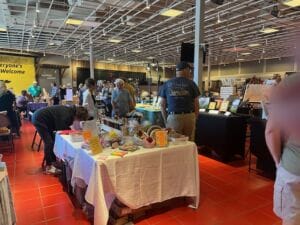Once considered a sport for men behind country club gates, golf has seen a steady cultural shift over the past several decades. Women have challenged exclusionary rules of golf, elevated the professional game through the LPGA and are now fueling growth both at the grassroots and recreational levels.
The numbers tell the story: Today, women represent nearly a quarter of all U.S. golfers, and participation is growing fastest among girls under 18 — a trend I think about often as a father of two daughters under 2, who I hope will have every opportunity in the game if they choose to pursue it.
On this Women’s Equality Day (August 26), we commend women golfers for their progress on the green throughout the decades.
DEEPER DIVE: Here’s where the residential real estate market stands in 2025
LOCAL NEWS: 100 best places to work and live in Arizona for 2025
INDUSTRY INSIGHTS: Want more news like this? Get our free newsletter here
Country Club Access for Women
For much of the 20th century, private golf clubs across the country restricted women’s access. Many allowed only limited tee times, while others prohibited women from full membership altogether. The debate gained momentum in the ‘80s and ‘90s as lawsuits and public pressure mounted against discriminatory practices.
One turning point came in 1990 when Augusta National Golf Club — which was long criticized for its male-only policy — was forced to confront membership discrimination after the controversy surrounding Shoal Creek Golf Club, which barred Black members while preparing to host the PGA Championship. By 2012, Augusta admitted its first female members, a symbolic milestone that reverberated across the sport.
While barriers have not completely disappeared, women today have far more access to private and public courses, reflecting broader changes in workplace and social equality.
Women Taking it to the Professional Level
The Ladies Professional Golf Association (LPGA), founded in 1950, has played a central role in showcasing the talent and determination of female golfers. Over the past 50 years, the tour has grown from a handful of events to more than 30 tournaments worldwide, drawing top athletes and millions of viewers.
Legends like Nancy Lopez and Annika Sörenstam, and today’s stars such as Nelly Korda and Lexi Thompson, have elevated women’s golf into mainstream sports culture. According to the LPGA, total prize money has surpassed $100 million annually, a testament to rising corporate sponsorships and global interest.
Casual Play: Women on the Fairways and in the Clubhouse
Beyond the professional stage, casual play has become a vital part of golf’s growth among women. According to the National Golf Foundation (NGF), women account for roughly 6 million of the nation’s 25 million golfers.
Their presence isn’t limited to traditional country clubs. Women are increasingly active in municipal leagues, social golf groups and alternative formats like par-3 courses, simulators and entertainment venues such as Topgolf.
Industry leaders note that these casual and social entry points are breaking down long-standing barriers of intimidation. For many women, golf is not just about competition, but about networking, wellness and community. The rise of women-focused leagues, clinics and “ladies days” at courses nationwide has provided opportunities for both beginners and seasoned players to connect on and off the course.
To honor women golfers, Wigwam Golf will host Ladies Day every Sunday in September. Female golfers will receive a 30% discount on green fees after 11 a.m. by booking with the online code “SUNDAYLADIES” at www.wigwamgolf.com.
The Future is Female: Young Girls Driving the Game
Perhaps the most dramatic shift is happening at the youth level. According to the NGF, girls under 18 now account for more than one-third of all junior golfers, up from just 15% in 2000. That makes them the fastest-growing demographic in the game.
Organizations such as LPGA, USGA Girls Golf and First Tee are fueling that surge by introducing golf in schools and community programs. LPGA*USGA Girls Golf, in particular, has grown from a single site in 1989 to more than 500 nationwide, serving over 90,000 girls annually.
At Wigwam Golf, we’ve seen firsthand the impact that the First Tee program can positively impact the lives and golf skills of young athletes, from learning healthy choices to improving their game. We encourage parents to sign kids 12+ up for the program, which is free and hosted regularly at our golf property, at www.firstteephoenix.org/wigwam.
When it comes to golf, growth matters. The long-term health of golf depends on welcoming new demographics, from young girls discovering the sport for the first time to diverse players who reflect the broader population. As golf continues to expand beyond its traditional base, it ensures not only a stronger, more sustainable future, but also a game that truly belongs to everyone.
Author: Tyler Morse is Head Golf Professional and Director of Operations at Wigwam Golf, Litchfield Park’s award-winning golf course. Wigwam Golf’s three courses – Gold, Red and Blue – have attracted golf travelers worldwide since opening in 1965. To this day Wigwam Golf continues to link traditions and generations together through original golf course designs crafted by Robert “Red” Lawrence (Red Course) and Robert Trent Jones, Sr. (Gold Course and Blue Course), with contemporary touch ups made by Tom Lehman Design. To learn more and schedule your round, visit www.wigwamgolf.com.




